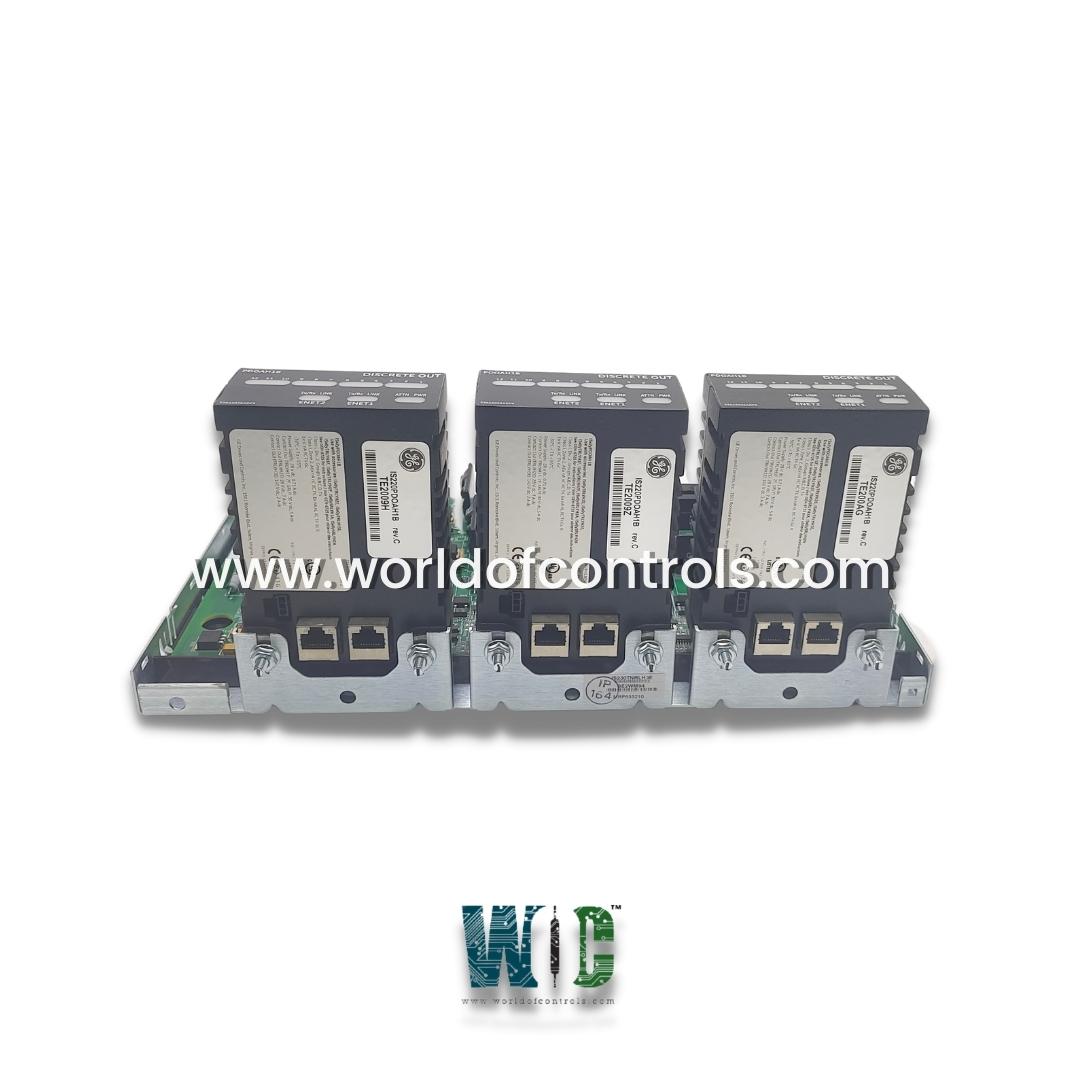
World Of Controls understands the criticality of your requirement and works towards reducing the lead time as much as possible.
IS230TNRLH1E - Relay Output Assembly Module is available in stock which ships the same day.
IS230TNRLH1E - Relay Output Assembly Module comes in UNUSED as well as REBUILT condition.
To avail our best deals for IS230TNRLH1E - Relay Output Assembly Module, contact us and we will get back to you within 24 hours.
SPECIFICATIONS:
Part Number: IS230TNRLH1E
Manufacturer: General Electric
Series: Mark VIe
Product Type: Relay Output Assembly Module
Number of channels: 12
Common Mode Voltage Range: +5 V dc
Maximum Lead Resistance: 15Ω
Analog output current: 0-20 mA
Operating temperature: -30 to 65 °C
Size: 8.26 cm high x 4.18 cm
Frequency: 50 or 60 Hz
Repair: 3-7 Day
Availability: In Stock
Weight: 2 lbs
Country of Origin: United States
FUNCTIONAL DESCRIPTION:
IS230TNEAH2A is a Relay Output Assembly Module manufactured and designed by General Electric as part of the Mark VIe Series used in GE Distributed Control Systems. The board is intended for DIN-rail or flat installation. The board accepts 24 group isolated contact inputs from an external source with a nominal 24, 48, or 125 V dc wetting voltage. To protect against surge and high-frequency noise, the contact inputs have noise suppression. It has 12 form-C relay outputs and can accept various option cards to expand relay functions.
OPERATION:
Wetting Voltage Calibration: The product is calibrated to work with three different wetting voltages: 24 V dc, 48 V dc, and 125 V dc. This calibration ensures that the product operates optimally and accurately when connected to circuits with these specific voltage levels.
Input Wetting Voltage Ranges: The input wetting voltage ranges determine the acceptable voltage levels for reliable operation. The product has different ranges for different wetting voltages. For example, for a wetting voltage of 24 V dc, the input wetting voltage range is 16 to 32 V dc. Similarly, for a wetting voltage of 48 V dc, the range is 32 to 64 V dc, and for a wetting voltage of 125 V dc, the range is 100 to 145 V dc.
Threshold Voltage: The threshold voltage is an important parameter for the product's operation. It is set at half of the wetting voltage. The threshold voltage acts as a reference point for determining the ON/OFF state of the input signals and plays a role in signal detection and processing.
Contact Input Current Limitation: The product imposes specific limits on the contact input currents to ensure safe and proper operation. The first 21 circuits have a current limit of 2.5 mA, while circuits 22 to 24 can handle currents up to 10 mA. These current limitations protect the circuits from excessive current flow and potential damage.
Current Limitation on 24 V DC Supply: The product's 24 V DC supply is equipped with resetting polymer positive temperature coefficient (PTC) fuses that limit the current to 0.5 A. These fuses ensure that the supply remains protected and prevent excessive current draw, thereby maintaining safe operation.
Input Filters and Surge Suppression: Each input of the product is equipped with filters near the point of signal entry. These filters serve multiple purposes: they reduce high-frequency noise, suppress voltage surges, and help maintain signal integrity by filtering out unwanted interference. By implementing these filters, the product ensures reliable and accurate signal processing.
I/O Processor and Optical Isolation: The discrete input voltage signals are routed to the I/O processor within the product. The I/O processor converts these analog signals into digital signals, which are then transmitted to the controller. To ensure electrical isolation and prevent interference, the signals are transmitted via optical isolators. This isolation mechanism protects the controller and ensures the integrity of the signals during transmission.
WOC has the largest stock of GE Distributed Control System Replacement Parts. We can also repair your faulty boards. WORLD OF CONTROLS can also supply unused and rebuilt backed-up with a warranty. Our team of experts is available round the clock to support your OEM needs. Our team of experts at WOC is happy to assist you with any of your automation requirements. For pricing and availability on any parts and repairs, kindly get in touch with our team by phone or email.
What type of installation is the board intended for?
It is designed for DIN-rail or flat installation, providing flexibility in mounting options for various applications.
What are the voltage specifications for the contact inputs?
The board accepts 24 group isolated contact inputs from an external source with a nominal 24, 48, or 125 V dc wetting voltage. The board is calibrated for wetting voltages of 24, 48, and 125 V dc.
How are surge and high-frequency noise suppressed in the contact inputs of the board?
To protect against surge and high-frequency noise, the contact inputs are equipped with noise suppression mechanisms. These mechanisms help maintain signal integrity and ensure reliable operation.